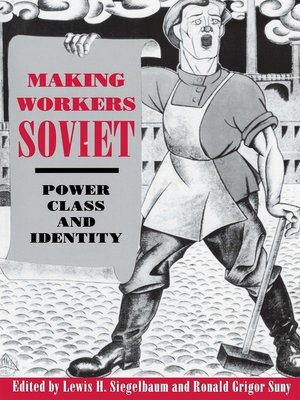
Sign up to save your library
With an OverDrive account, you can save your favorite libraries for at-a-glance information about availability. Find out more about OverDrive accounts.
Find this title in Libby, the library reading app by OverDrive.



Search for a digital library with this title
Title found at these libraries:
| Loading... |
Drawing on such diverse sources as propaganda art, the trade union press, workers' memoirs, and materials in recently opened Soviet archives, this is the first book to examine the shifting identity of the "working class" in late tsarist and early Soviet societies. New essays by fifteen leading historians show how Russian workers responded to attempts to make them Soviet.
Initial chapters consider power relations and working-class identity in imperial Russia. The effects of the revolutionary upheavals of 1917 to 1921 on labor relations among printers and coal miners are then discussed. Addressing subsequent decades, other essays document the situation of cotton workers and white-collar workers embroiled within the ambiguities of the New Economic Policy or challenge the appropriateness of "class" analysis for the Stalin era. Additional chapters reconstruct workers' responses to the Great Purges and trace the significance of class in visual and verbal discourse. Making Workers Soviet will be central to the current rethinking of Soviet history and of class formation in noncapitalist settings.
Contributors: Victoria E. Bonnell; Sheila Fitzpatrick; Heather Hogan; Diane P. Koenker; Stephen Kotkin; Hiroaki Kuromiya; Moshe Lewin; Daniel Orlovsky; Gabor T. Rittersporn; Lewis H. Siegelbaum; S. A. Smith; Mark D. Steinberg; Ronald Grigor Suny; Chris Ward; Reginald E. Zelnik
|Drawing on such diverse sources as propaganda art, the trade union press, workers' memoirs, and materials in recently opened Soviet archives, this is the first book to examine the shifting identity of the "working class" in late tsarist and early Soviet societies. New essays by fifteen leading historians show how Russian workers responded to attempts to make them Soviet.
Initial chapters consider power relations and working-class identity in imperial Russia. The effects of the revolutionary upheavals of 1917 to 1921 on labor relations among printers and coal miners are then discussed. Addressing subsequent decades, other essays document the situation of cotton workers and white-collar workers embroiled within the ambiguities of the New Economic Policy or challenge the appropriateness of "class" analysis for the Stalin era. Additional chapters reconstruct workers' responses to the Great Purges and trace the significance of class in visual and verbal discourse. Making Workers Soviet will be central to the current rethinking of Soviet history and of class formation in noncapitalist settings.






